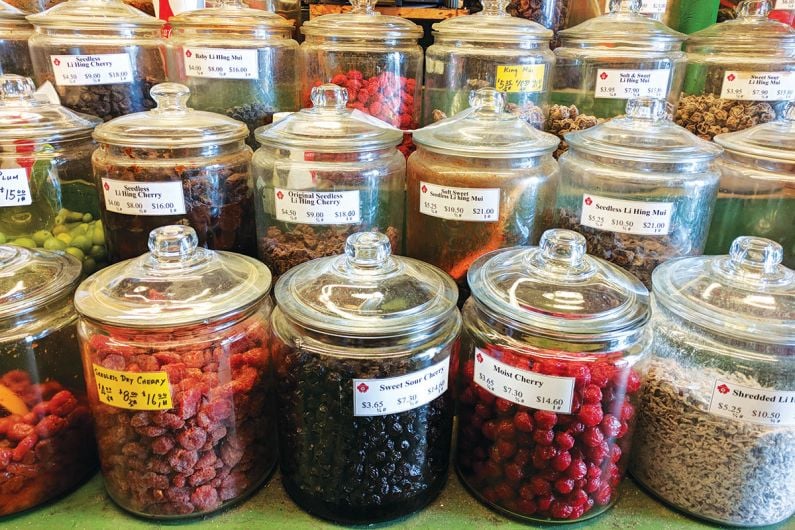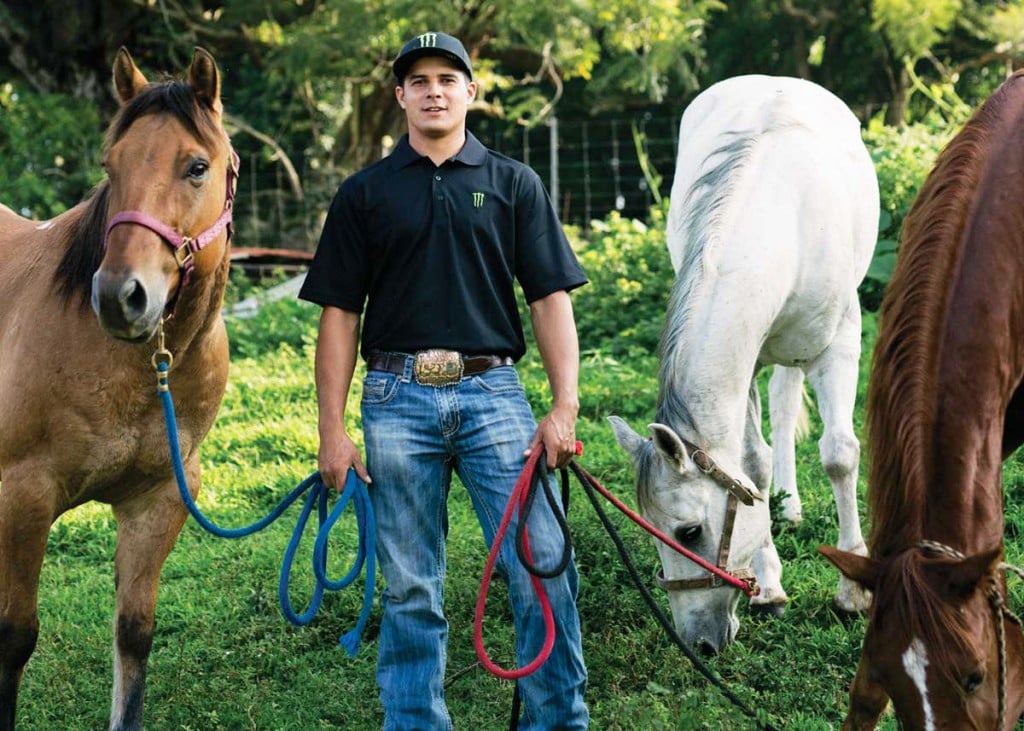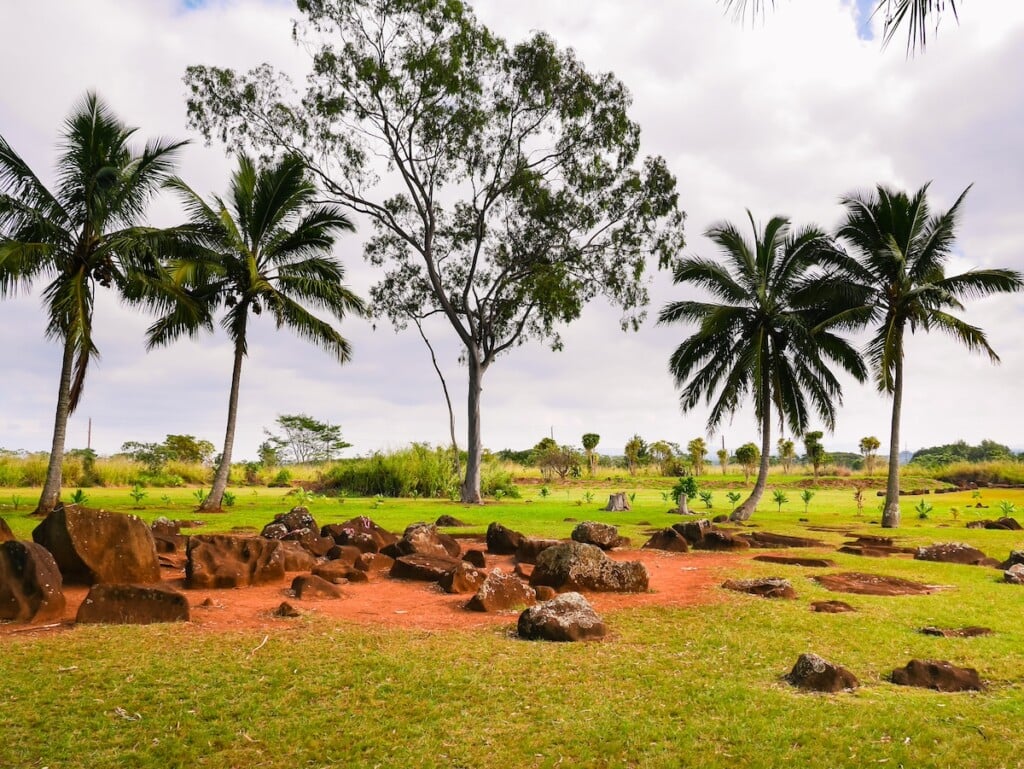The Meaning of The Names of 19 Hawaiʻi Places
There’s a story behind every place name in the Islands.

Since February is Mahina ‘Ōlelo Hawai‘i, Hawaiian Language Month, we thought it would be fun to share the literal meaning behind the names of some of Hawaiʻi’s most iconic places.
Source: Hawaiʻi Places Names, 2002
Lahaina
Meaning: cruel sun, from the old pronunciation Lāhainā. This waterfront town on Maui was destroyed by wildfires in 2023.
Poʻipū

Aerial view of Poʻipū Beach on Kauaʻi.
Photo: Getty Images/pawel.gaul
Meaning: completely overcast or crashing, as in waves. It’s interesting that Poʻipū on Kauaʻi is actually considered to be on the sunnier side of the island, though “crashing waves” makes sense. The beach here is known to have consistent surf year-round.
Kamuela
Meaning: Samuel. More commonly referred to as Waimea, this rural town on Hawaiʻi Island is either named for Samuel Spencer, a former postmaster, or Samuel Parker, the son of the founder of Parker Ranch.
Waimānalo

Waimānalo on Oʻahu.
Photo: Getty Images/Wirestock
Meaning: potable water. This area on Windward Oʻahu, between Makapuʻu Point to the east and Wailea Point to the west, is known for its long stretches of beaches. It got its name likely from the many brackish ponds here that were used for irrigation.
Kalaeloa
Meaning: long point. For years this area in Central Oʻahu was known as Barbers Point, named after Barbers Point Naval Air Station that was housed there. When it was turned over to the state in July 1999, the area’s name was changed back to Kalaeloa, its traditional Hawaiian name. From the east end of Mamala Bay, the point looks extremely long, hence the name.
Waiʻānapanapa

Waiʻānapanapa on Maui.
Photo: Getty Images/LisaBrightfire
Meaning: glistening water. If you’ve ever been to this part of Hāna on Maui, you’ll see why it has this name.
Mānoa
Meaning: vast, wide. This lush—and wide—valley in Honolulu stretches back into the Koʻolau Mountains.
ʻUlupalakua
Meaning: breadfruit ripening [on] back [of carriers]. This Upcountry Maui town is home to ranches and the island’s only vineyard and winemaker, MauiWines. But the name originates from a story about a Hawaiian chief who would send his messengers to Hāna for breadfruit.
ʻAnini

ʻAnini Beach on Kauaʻi.
Photo: Getty Images/Kyle Ledeboer
Meaning: dwarfish, stunted. The fringing reef off ʻAnini Beach on Kauaʻi is one of the longest and widest in the state, at 2 miles long and 1,600 feet wide at its widest point. It’s a great spot for snorkeling and swimming.
Mokulua
Meaning: two islands. This is the name of the twin islets off Lanikai Beach on Oʻahu. Very literal. In fact, the largest island is called Moku Niu (big island) and the smaller is Moku Iki (small island).
Kapaʻa
Meaning: the solid or the closing. There’s two “Kapaʻa” in Hawaiʻi, one on Kauaʻi and another on Oʻahu. On Oʻahu this area is a rock quarry; the meaning of its name (solid) makes sense here.
Pāpōhaku

Pāpōhaku Beach on Molokaʻi.
Photo: Getty Images
Meaning: Stone fence. At 2 miles long and 300 feet wide, this is the largest beach on Molokaʻi. No one seems to know the origin of its name.
Kaimukī
Meaning: the ti oven. This bustling neighborhood in Honolulu is thought to be a place where the mythical Menehune cooked ti roots in ovens, hence the name.
Kaupō
Meaning: landing [of canoes] at night. The peninsula known as Kaupō on Oʻahu—there’s one on Maui—was once a fishing village northwest of Makapuʻu Point, now the site of a beach park and Sea Life Park.
Mānana

A view of Mānana Island off Oʻahu.
Photo: Getty Images/Brycia James
Meaning: buoyant. The 67-acre island off Waimānalo—and visible from the top of the Makapuʻu Lighthouse Trail—is also known as Rabbit Island. Many people—even locals—assume that mānana means rabbit, but it doesn’t. (Lāpaki is rabbit in ʻōlelo Hawaiʻi.) It got that name because 1) from the beach it looks like a rabbit’s head protruding from the water and 2) it was once the home of a rabbit colony.
Mākaha
Meaning: fierce. This area on the West Side of Oʻahu is known for its world-famous beach, Mākaka Beach. It may have gotten its name for the fierce surf that pounds the shoreline here in the winter months.
Kaʻaʻawa

Kaʻaʻawa Beach on Oʻahu.
Photo: Courtesy of the Hawaiʻi Tourism Authority
Meaning: the wrasse fish. This picturesque neighborhood and beach on Oʻahu is likely named for the ʻaʻawa fish that frequent the reefs here.
Polipoli
Meaning: polishing stone. A spring and state recreational area on Maui, Polipoli is also the name of a beach and surf site in Mokulēʻia on Oʻahu’s North Shore.
Honolua

Honolua Bay on Maui.
Photo: Getty Images/M Swiet Productions
Meaning: two bays or twin bays. This bay in West Maui is famed for its surf during winter months and snorkeling during the summer. Its name refers to the two bays located along the shoreline here.


